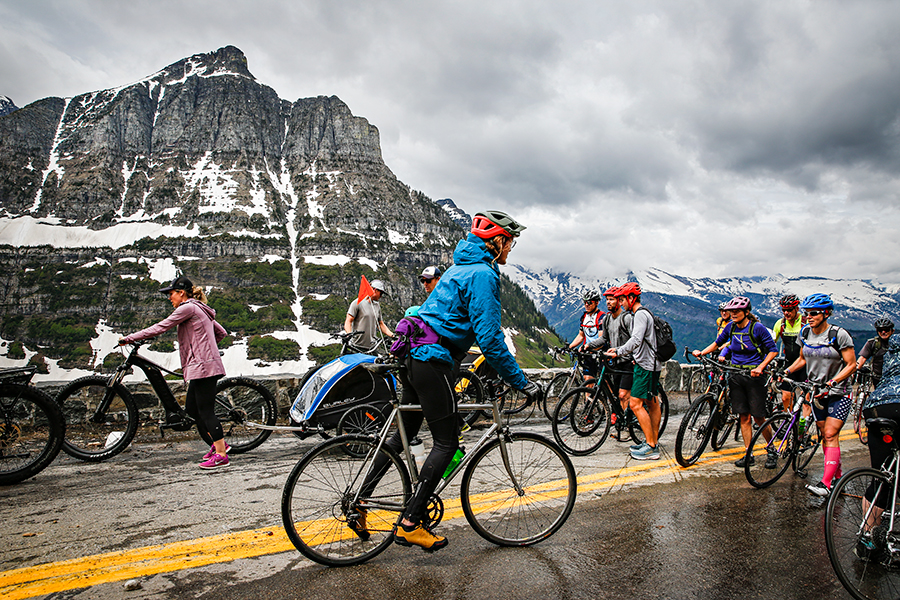
Weather Closes Alpine Access to Glacier Park as Services Shutter for Winter
Sustained winter weather prompts motorized closure in Glacier National Park’s upper reaches, though motorists can still drive to Avalanche Creek from the west, Jackson Glacier Overlook from the east
Due to sustained winter weather conditions at elevations higher than 5,000 feet, Glacier National Park officials on Oct. 10 announced the closure of the Going-to-the-Sun Road’s alpine sections, including the scenic route to Logan Pass.
Although officials issued the directive as a temporary closure due to gusting winds and snow on Sunday, it comes less than a week before the road’s scheduled seasonal closure set to begin at midnight on Oct. 17; officials haven’t yet determined whether they can safely reopen the road before then.
“The road is currently closed due to weather. If the weather improves it will reopen,” Park Spokesperson Gina Kerzman said on Oct. 12. “The hard closure for the season is October 17 at midnight unless weather forces earlier closure.”
Even with the iconic mountain thoroughfare’s most dramatic expanse off limits to motorists, visitors can still drive 15.5 miles of the road from the West Glacier entrance to Avalanche Creek, and 13.5 miles from the St. Mary entrance to Jackson Glacier Overlook. Hikers and bikers can explore beyond the closures.
The Going-to-the-Sun Road typically closes between Avalanche Creek and Jackson Glacier Overlook — a segment that spans the Continental Divide at Logan Pass — on or before the third Monday in October, depending on road and weather conditions, officials said.
This year, the Sun Road had offered 96 days of motorized access to the park’s stunning alpine expanses as of Oct. 12, with all 50 miles of the scenic byway opening July 8.
Park officials initially closed the road on Sunday afternoon, citing winter weather at higher elevations. Since then, several inches of snow have accumulated at Logan Pass and the National Weather Service has forecast additional snowfall and wind gusts up to 50 mph for elevations above 5,000 feet. Logan Pass sits at an elevation of 6,646 feet.
Visitors are reminded that hiker and biker access is permitted on most closed roads in the park however risks include falling ice or rocks, and ice-covered or snowy road conditions.
The park’s road status page and its social media channels are the best resource for real-time updates on road closures and hiker/biker access restrictions. However, other real-time reporting systems such as campground availability and trail status, are currently down on Glacier National Park’s website. The service is not expected to resume this season.
Numerous closures and seasonal-service adjustments have already occurred throughout the park.
For example, Many Glacier Road closed to the public for the year on Sept. 19 due to ongoing road construction, while construction on Camas Road is causing 30-minute delays in both directions during the day.
Operating hours for visitor services in Glacier National Park, including the park’s shuttle system, campgrounds, backcountry permit stations, boat inspections, and concession operations, have also been shuttered or adjusted for the season.
Visitor information services at Logan Pass closed Sept. 26, as did the Glacier National Park Conservancy’s bookstore inside the visitor center. Potable water hasn’t been available at Logan Pass since Sept. 12.
Services at St. Mary Visitor Center closed Oct. 3, while visitor information services at Apgar Visitor Center have moved to weekends only through Oct. 24, weather permitting. Restrooms and potable water are available at the Apgar Visitor Center plaza year-round.
Closures have also taken effect on front-country campgrounds including Logging Creek, Quartz Creek, Fish Creek, Sprague Creek, and Many Glacier.
One section of Apgar Campground (Loop B) has moved to primitive status.
Bowman and Kintla Lake campgrounds transitioned to primitive status a month ago, as did Two Medicine campground.
Campgrounds in primitive status have vault toilets available and fees are reduced. No campground reservations are issued at primitive campgrounds and all camping is first-come, first-served.
Avalanche Creek, Cut Bank, Rising Sun, and St. Mary campgrounds remained closed during the 2021 season.